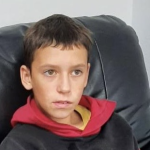Play therapy for autism in childhood: traditions of the past versus innovative opportunities of modern biomedicine
Emotional communication is one of the most important human needs. It is especially necessary in early childhood. But an autistic child, because of their peculiar brain structure, does not realize this need. The child is unemotional, withdrawn, and asocial, and that negatively affects their emotional sphere and relationships with the world around them.
Specialist-led play therapy helps an autistic child to:
- Learn how to feel and understand their own emotions
- Instill the skill of emotional communication with parents and friends
- Develop the ability to solve their own problems
- Cope with anxiety, fear, and behavioural nonconformities
- Develop a strategy for communicating with the environment at a comfortable level
Play therapy for autism is especially important for children under 6 years (not calendar age, but the age of mental development). Children must study daily, and classes have to become a lifestyle to achieve a positive result.
The play approach to autism correction is considered all over the world a classic of socialization and instilling everyday life skills in an autistic child.
Play therapy for children with ASD is aimed at solving 6 tasks for the comprehensive development of the patient:
- Interest in self-consciousness and the world around them
- Formation of family and friendly relationships
- Ability for dialogue and two-way communication
- Non-verbal and complex communication
- Ability to express feelings and thoughts through emotions
Playing with an autistic child is important and necessary because he or she plays his or her own game and does not tolerate intrusion into it. But studying many vital skills is possible only in a game format correctly synchronised with the rules of a patient’s game.
The main methods of play therapy for autism are:
- DIR model: Floortime — a game for general development, relationships, and individual differences
- Project P.L.A.Y. — a game method for the development of a child’s speech and communication skills
- “Mifne” or non-directive play — a method that supposes playing according to the rules of a patient and the inclusion of corrective elements in it by the therapist
- Son-Rise — a method similar to the previous one, but with a difference: the main participant is a parent.
Mardaleishvili Medical Centre does not provide play therapy for autism — you can undergo it at your place of residence. But we offer a more powerful and effective treatment.
Correction of childhood autism with stem cells is an innovative method of brain restoration
Biomedicine and its method of stem cell transplantation are a serious counterbalance to the conservative treatment of children with autism spectrum disorder used in traditional medicine.
The main distinction of the new method is the correction of genetic errors in the brain structure, which eliminates the prime cause of the pathology and erases its symptoms. Classic methods of play therapy only deal with the symptoms of autism.
It is much better for your child to undergo this method with cellular correction, as the therapeutic effects achieved can be reinforced and intensified with play therapy, which will be more effective than without biomedical correction.
Make a decision to undergo stem cells treatment for autism today, and tomorrow your child will start a more healthy, socially active and promising life!
Autism Treatment Center Videos
Autism treatment with own stem cells
Cord blood association congress
International Quality Crown
Autism Treatment Reviews
Autism treatment with own stem cells
The story of Alessandro (6 years old)
Autism Patient Testimonial - Stem Cell Treatment
Clients Testimonials

Feedback from Igor, David’s father (12 years old) Read More

Feedback from Olga, Fedya’s mother Read More

Feedback from Natalia, Radomir’s mother (15 years old) Read More

Feedback from Esther, Samuel’s mother (8 years old) Read More

Feedback from Abibe, Selim’s mother (7 years old) Read More












